Kristine Hughes's Blog, page 94
April 11, 2014
THE DUKE OF WELLINGTON TOUR - VIDEO HIGHLIGHTS - PART FIVE - WALMER CASTLE
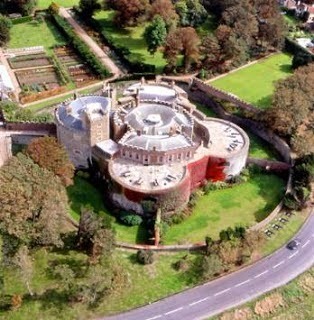 Walmer Castle, Kent
Walmer Castle, KentOn Monday, September 8th, 2014, we will journey by private bus from London through the countryside of Kent to the coast of the British Channel at Walmer Castle.
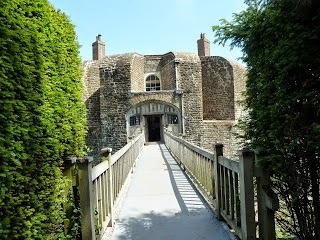 Walmer Castle
Walmer CastleWalmer Castle was built by Henry VIII to fortify the Kentish Coast against the invasion. The Duke lived – and died – here, his residence as Lord Warden of the Cinque Ports, an appointment that dates back to the 12th century. In much more recent times, Winston Churchill was the Lord Warden; and Queen Elizabeth the Queen Mother was Lord Warden from 1978-2002 (We’ll get to see the rose garden she planted at Walmer). Here is lovely video of the Castle and Gardens, accompanied by Bach..
In November, 1842, Queen Victoria and Prince Albert, with their first two children, Vicky, the Princess Royal, and Bertie, later King Edward VII, visited Walmer Castle. One of the ladies in waiting, Lady Lyttleton wrote of the Castle in her Correspondence:
"This is much what I expected. A Big round tower, with odd additions stuck on. Immense thick walls, and a heap of comical rooms of the odd shapes necessary as parts of a round house built close upon the shingly beach…It seems needless to go out for air, doors and windows all chatter and sing at once, and hardly keep out the dark storm of wind and rain which is howling round. All this outward rudeness mixes very oddly with the numbers of smart servants and courtly whispers and very tolerably got-up imitation of the palace mummeries we have contrived indoors…"
 Lady Lyttelton by John Jackson Lady Lyttelton (1787-1870) was the daughter of the 2nd Earl Spencer and his Countess, nee Lavinia Bingham; Lady Sarah was thus the niece of Georgiana, Duchess of Devonshire. In 1813, Lady Sarah married William Henry Lyttelton (1782–1837) who became the 3rd Baron Lyttleton in 1828; they had three sons and two daughters. Baron Lyttleton died in 1837, and soon afterwards, Lady Lyttleton became a lady in waiting to the new Queen Victoria.As a brief aside, the Lyttelton family resided at 17 St. James's Place, now part of the Stafford Hotel, which we'll be viewing as part of the St. James's Walking Tour we've scheduled during the London portion of the Tour.
Lady Lyttelton by John Jackson Lady Lyttelton (1787-1870) was the daughter of the 2nd Earl Spencer and his Countess, nee Lavinia Bingham; Lady Sarah was thus the niece of Georgiana, Duchess of Devonshire. In 1813, Lady Sarah married William Henry Lyttelton (1782–1837) who became the 3rd Baron Lyttleton in 1828; they had three sons and two daughters. Baron Lyttleton died in 1837, and soon afterwards, Lady Lyttleton became a lady in waiting to the new Queen Victoria.As a brief aside, the Lyttelton family resided at 17 St. James's Place, now part of the Stafford Hotel, which we'll be viewing as part of the St. James's Walking Tour we've scheduled during the London portion of the Tour.
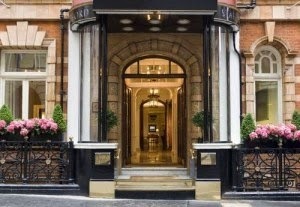 Stafford Hotel, St. James's, London
Stafford Hotel, St. James's, London
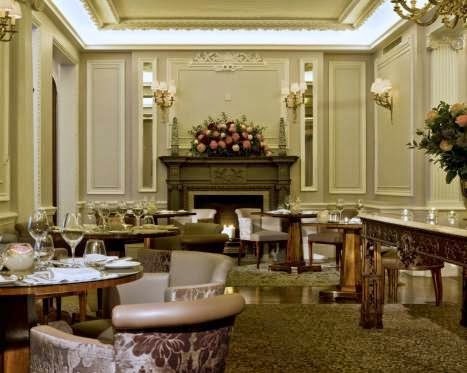 The Lyttleton, fine dining room in the StaffordLady Lyttleton's further comments on Walmer Castle are included in this video, from the BBC series Royal Upstairs Downstairs. Antiques expert Tim Wonnacott and chef Rosemary Shrager visit twenty of the houses visited by Queen Victoria to see what she saw and taste what she ate. In this 29-minute episode, they are at Walmer Castle.
The Lyttleton, fine dining room in the StaffordLady Lyttleton's further comments on Walmer Castle are included in this video, from the BBC series Royal Upstairs Downstairs. Antiques expert Tim Wonnacott and chef Rosemary Shrager visit twenty of the houses visited by Queen Victoria to see what she saw and taste what she ate. In this 29-minute episode, they are at Walmer Castle.
 You can see three more posts from this blog about Walmer Castle.Victoria visits in 2011 here. Wellington's life at Walmer here. The Death of Wellington at Walmer here.
You can see three more posts from this blog about Walmer Castle.Victoria visits in 2011 here. Wellington's life at Walmer here. The Death of Wellington at Walmer here. You'll find the complete itinerary and details for The Duke of Wellington Tour here
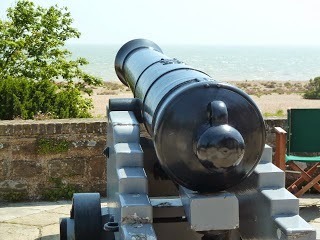
Published on April 11, 2014 00:30
April 9, 2014
AT THE CORCORAN: PART TWO - THE AMERICAN COLLECTION
Victoria here, inviting you to join me in a brief view of some of the American treasures in the collection of the Corcoran Gallery in Washington DC. I wrote about some European masterpieces here. I have more to share about the Corcoran, very soon.
 Washington Before Yorktown, 1824-25Rembrandt Peale (1778-1860)
Washington Before Yorktown, 1824-25Rembrandt Peale (1778-1860)As befits a museum in the nation's capital, the Corcoran collects American paintings from the colonial period through the present day.
 Cupid Stung by a BeeBenjamin West (b. Swarthmore, PA, 1738 - d. London 1820
Cupid Stung by a BeeBenjamin West (b. Swarthmore, PA, 1738 - d. London 1820A different version of this scene, also by West, hangs in the Hermitage, St. Petersburg, Russia. Benjamin West, born in Pennsylvania, was recognized for his abilities by wealthy colonial citizens and traveled to Italy to study the old masters. On his way home, he stopped in London and never returned to the colonies, after 1776, the United States. He met and received commendations from many prominent British leaders, and was named the second president of the Royal Academy, following in the footsteps of Sir Joshua Reynolds. West, surveyor of the King's pictures for many years, was called "the American Raphael." His historical paintings are found in museums all over the world.
 Gilbert Stuart, 1755-1828: George Washington, ca. 1800
Gilbert Stuart, 1755-1828: George Washington, ca. 1800Gilbert Stuart. who studied with West in London, painted a number of similar portraits of the first President of the United States, especially familiar since his image is reproduced on the U. S. one dollar bill.
 Samuel F. B. Morse (1791-1872) House of Representatives, 1822-23
Samuel F. B. Morse (1791-1872) House of Representatives, 1822-23Another of West's students was Samuel Finley Breese Morse, a celebrated painter who later turned to inventing and is credited co-developing the single wire telegraph and Morse Code.
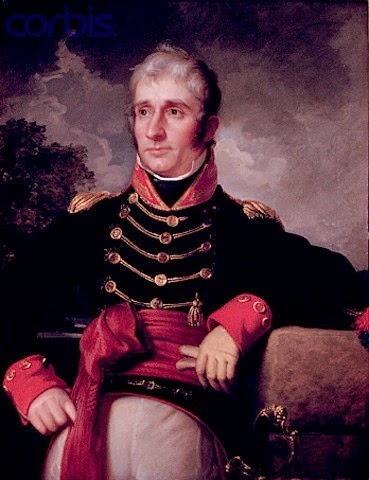 Rembrandt Peale: Lt. Col. Joseph Outen Bogart, c. 1822
Rembrandt Peale: Lt. Col. Joseph Outen Bogart, c. 1822Charles Willson Peale (1741-1826) sired a number of children named after famous artists, many of whom became well-known painters in their own right: Rembrandt Peale, Rapaelle Peale, Rubens Peale, and Angelica Kauffman Peale. Charles and several of his children studied with West in London. They became well known for portraits of early American leaders.
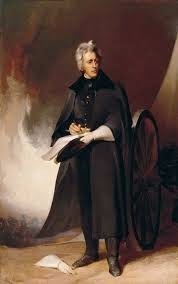 Thomas Sully ( 1783-1872): General Andrew Jackson, 1845
Thomas Sully ( 1783-1872): General Andrew Jackson, 1845Thomas Sully was born in England but came to the United States as a child of nine in 1792. He returned to London and studied under Benjamin West. Sully was celebrated enough to paint the young Queen Victoria in 1838. The version below is in New York's Metropolitan Museum. several other versions and copies are in the Royal Collection.,
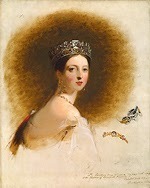 Sully: Queen Victoria
Sully: Queen VictoriaThe Corcoran's American Collection continues with many painters from the Hudson River School and other landscapes and portraits celebrating the beauties and dangers of the open spaces of the West.
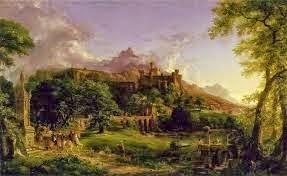 Thomas Cole (1801-1848) The Departure, 1837
Thomas Cole (1801-1848) The Departure, 1837Born in Lancashire, England, Cole came to Ohio as a boy and studied with itinerant painters. After moving to Philadelphia and developing as a painter, he studied the great masters in Europe. Cole is generally attributed with being the founder of the Hudson River School, that loosely based confederation of artists whose landscapes of the unspoiled American wilderness are treasured by museums across the country.
 Frederic Edwin Church (1826-1900), Niagra, 1857
Frederic Edwin Church (1826-1900), Niagra, 1857Church was born in Connecticut to a wealthy family. He studied with Thomas Cole and became widely known and revered for his dramatic, romantic landscapes.

Albert Bierstadt (1830-1902) Mount Corcoran 1877
Bierstadt was born in Prussia, and came to the U.S. in childhood. Though he returned to Germany to study art, he is best known for his romantic views of the American landscape as well as studies of the Westward Expansion. He traveled to the Pacific Coast, throughout California, Oregon and Washington.
 John Singer Sargent (1856-1925) The Oyster Gatherers at Cancale, 1878
John Singer Sargent (1856-1925) The Oyster Gatherers at Cancale, 1878Sargent was born to Amercan expatriate parents in Florence, Italy. He lived in Europe most of his life, studying in Paris and becoming a popular portrait painter in London. When he traveled to the US, he received many important commissions. But like so many successful portraitists, he preferred other subjects. Sargent traveled throughout Europe and to the Middle East, making watercolors sketches of his journeys.
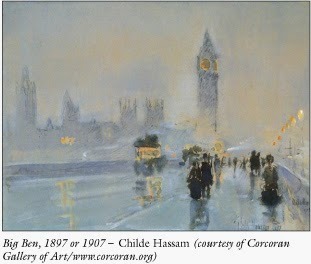 Childe Hassam, Big Ben, 1897-1907
Childe Hassam, Big Ben, 1897-1907Frederick Childe Hassam (1859-1935) was an influential American Impressionist, whose work helped to bring acceptance to the styles we now accept as so very familiar.
 Ellsworth Kelly (b. 1923) Yellow Red Triangle, 1973
Ellsworth Kelly (b. 1923) Yellow Red Triangle, 1973Ellsworth Kelly is one of many contemporary American artists whose works are in the collection of the Corcoran.
More ahead on the Corcoran Gallery of Art.
All photos (except the first) ©Corcoran Gallery of Art
Published on April 09, 2014 00:30
At the Corcoran: Part Two, The American Collection
Victoria here, inviting you to join me in a brief view of some of the American treasures in the collection of the Corcoran Gallery in Washington DC. I wrote about some European masterpieces here. I have more to share about the Corcoran, very soon.
 Washington Before Yorktown, 1824-25Rembrandt Peale (1778-1860)
Washington Before Yorktown, 1824-25Rembrandt Peale (1778-1860)As befits a museum in the nation's capital, the Corcoran collects American paintings from the colonial period through the present day.
 Cupid Stung by a BeeBenjamin West (b. Swarthmore, PA, 1738 - d. London 1820
Cupid Stung by a BeeBenjamin West (b. Swarthmore, PA, 1738 - d. London 1820A different version of this scene, also by West, hangs in the Hermitage, St. Petersburg, Russia. Benjamin West, born in Pennsylvania, was recognized for his abilities by wealthy colonial citizens and traveled to Italy to study the old masters. On his way home, he stopped in London and never returned to the colonies, after 1776, the United States. He met and received commendations from many prominent British leaders, and was named the second president of the Royal Academy, following in the footsteps of Sir Joshua Reynolds. West, surveyor of the King's pictures for many years, was called "the American Raphael." His historical paintings are found in museums all over the world.
 Gilbert Stuart, 1755-1828: George Washington, ca. 1800
Gilbert Stuart, 1755-1828: George Washington, ca. 1800Gilbert Stuart. who studied with West in London, painted a number of similar portraits of the first President of the United States, especially familiar since his image is reproduced on the U. S. one dollar bill.
 Samuel F. B. Morse (1791-1872) House of Representatives, 1822-23
Samuel F. B. Morse (1791-1872) House of Representatives, 1822-23Another of West's students was Samuel Finley Breese Morse, a celebrated painter who later turned to inventing and is credited co-developing the single wire telegraph and Morse Code.
 Rembrandt Peale: Lt. Col. Joseph Outen Bogart, c. 1822
Rembrandt Peale: Lt. Col. Joseph Outen Bogart, c. 1822Charles Willson Peale (1741-1826) sired a number of children named after famous artists, many of whom became well-known painters in their own right: Rembrandt Peale, Rapaelle Peale, Rubens Peale, and Angelica Kauffman Peale. Charles and several of his children studied with West in London. They became well known for portraits of early American leaders.
 Thomas Sully ( 1783-1872): General Andrew Jackson, 1845
Thomas Sully ( 1783-1872): General Andrew Jackson, 1845Thomas Sully was born in England but came to the United States as a child of nine in 1792. He returned to London and studied under Benjamin West. Sully was celebrated enough to paint the young Queen Victoria in 1838. The version below is in New York's Metropolitan Museum. several other versions and copies are in the Royal Collection.,
 Sully: Queen Victoria
Sully: Queen VictoriaThe Corcoran's American Collection continues with many painters from the Hudson River School and other landscapes and portraits celebrating the beauties and dangers of the open spaces of the West.
 Thomas Cole (1801-1848) The Departure, 1837
Thomas Cole (1801-1848) The Departure, 1837Born in Lancashire, England, Cole came to Ohio as a boy and studied with itinerant painters. After moving to Philadelphia and developing as a painter, he studied the great masters in Europe. Cole is generally attributed with being the founder of the Hudson River School, that loosely based confederation of artists whose landscapes of the unspoiled American wilderness are treasured by museums across the country.
 Frederic Edwin Church (1826-1900), Niagra, 1857 Church was born in Connecticut to a wealthy family. He studied with Thomas Cole and became widely known and revered for his dramatic, romantic landscapes.
Frederic Edwin Church (1826-1900), Niagra, 1857 Church was born in Connecticut to a wealthy family. He studied with Thomas Cole and became widely known and revered for his dramatic, romantic landscapes.
Albert Bierstadt (1830-1902) Mount Corcoran 1877
Bierstadt was born in Prussia, and came to the U.S. in childhood. Though he returned to Germany to study art, he is best known for his romantic views of the American landscape as well as studies of the Westward Expansion. He traveled to the Pacific Coast, throughout California, Oregon and Washington.
 John Singer Sargent (1856-1925) The Oyster Gatherers at Cancale, 1878 Sargent was born to Amercan expatriate parents in Florence, Italy. He lived in Europe most of his life, studying in Paris and becoming a popular portrait painter in London. When he traveled to the US, he received many important commissions. But like so many successful portraitists, he preferred other subjects. Sargent traveled throughout Europe and to the Middle East, making watercolors sketches of his journeys.
John Singer Sargent (1856-1925) The Oyster Gatherers at Cancale, 1878 Sargent was born to Amercan expatriate parents in Florence, Italy. He lived in Europe most of his life, studying in Paris and becoming a popular portrait painter in London. When he traveled to the US, he received many important commissions. But like so many successful portraitists, he preferred other subjects. Sargent traveled throughout Europe and to the Middle East, making watercolors sketches of his journeys.  Childe Hassam, Big Ben, 1897-1907
Childe Hassam, Big Ben, 1897-1907Frederick Childe Hassam (1859-1935) was an influential American Impressionist, whose work helped to bring acceptance to the styles we now accept as so very familiar.
 Ellsworth Kelly (b. 1923) Yellow Red Triangle, 1973
Ellsworth Kelly (b. 1923) Yellow Red Triangle, 1973Ellsworth Kelly is one of many contemporary American artists whose works are in the collection of the Corcoran.
More ahead on the Corcoran Gallery of Art. All photos (except the first) ©Corcoran Gallery of Art
Published on April 09, 2014 00:30
April 7, 2014
Victoria and Kristine Throw a Sleepover Party
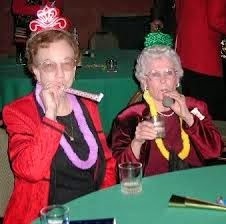
Last week, I drove down to Naples, Florida, in order to have a two day sleepover at Victoria's place. The husbands were away, and we planned to spend the time working on this blog and finalizing details of The Duke of Wellington Tour. I brought my laptop with me and we spent a few hours on arrival day working on our blog. And talking. And we had a few drinks. Then, before we knew it, the time had arrived to drive to Mercato, an upscale, outdoor shopping and entertainment venue close to Victoria's condo. We had pre-arranged to meet my daughter, Brooke, at the English Pub, before going on to the movie theatre in order to see The Grand Budapest Hotel.



I had pre-ordered our movie tickets online from The Silverspot Cinema, virtually one door away from the Pub.

The Cinema has a full bar, below, where we purchased cocktails

There's also a restaurant, which we didn't visit.

We found our (oversized leather) seats and settled down to watch the trailers, two of which looked intriguing
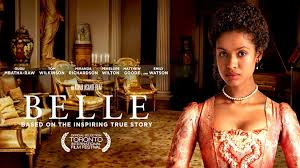
Belle
and

Railway Man
Soon, it was time for the main attraction
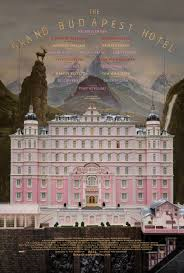
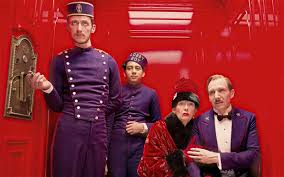
The Grand Budapest Hotel was a treat. I'd been looking forward to seeing it for months and, having watched many of the film's trailers, I feared that I may have ruined the experience for myself. But, as Victoria and Brooke agreed afterwards, the film was nothing like we expected. In fact, the trailers lead one to believe that the film will be a rollicking, madcap romp through pre-WWI Europe, but it turned out to be much more. I won't include any spoilers here. I'll just encourage you to see it for yourself. Click here to watch the trailer for the film.
Then join the staff at Mendl's, Zubrowka's premiere patisserie, as they show you how to make their legendary "courtesan au chocolat", as enjoyed my M. Gustave and all those at The Grand Budapest Hotel.

Afterwards, we went to the Naples Flatbread and Wine Bar for dinner. And wine.

Then Victoria and myself went back to her condo, ostensibly to do some more work on the blog/tour, but in reality we just sat around our computers playing games (Victoria) and watching Coronation Street (me) whilst drinking prosecco. I did work on my needlepoint while watching telly, if that counts at all.


On Friday morning, Victoria and I sat at our laptops and both logged onto Google Maps. We accessed Streetview and put our little yellow men onto St. James's Street and began mapping out our route for the Walking Tour of St. James's we'll be hosting during our stay in London on the Wellington Tour. Of course, each of us quickly became side tracked - we toddled up St. James's Street to St. James's Place and peeked at Spencer House before visiting the Stafford Hotel. We Googled the menues for Brasserie St. Jacques and Franco's in Jermyn Street. Then we strolled (virtually) up to Piccadilly and spent some time investigating The Albany. This, of course, necessitated more Googling, as well as much discussion and the reading of many articles about same on the internet.
At this point, we decided to make Bloody Mary's and re-heat our food from last night for our lunch. However, before we could uncap the vodka, Victoria went into her bedroom only to find a gecko on the wall. I had just had this problem at my own house last week, so I instructed Victoria to get me a broom and together we chased the gecko up walls, behind furniture and across the carpeting. Finally, we trapped it beneath a small waste basket and slid a magazine under it in order to trap the gecko within. Of course the gecko escaped as we lifted the basket, so I pounced, grabbed the gecko up in my fist and ran outside with it.

Thus having averted a gecko crisis (Victoria would not have been able to sleep knowing there was a gecko in the bedroom with her), we rewarded ourselves with our famous Wake Up Crabby Bloody Marys.
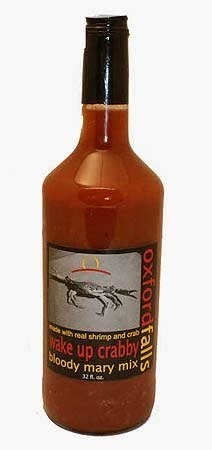

Surprisingly, we spent a productive few hours thereafter working on this blog. In fact, I was working on this very post, whilst Victoria penned Part Two of her post on the Corcoran Art Gallery.
As night fell, we ventured out to the funky Real Macaw restaurant in Naples, where we met up with my son, Matthew.

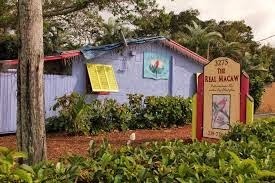
And then we went on to Harold's Place, a poolside chiki bar where we had a few drinks with my daughter, Brooke

before having dinner at The French American Bistro, where we feasted on escargot and beef bourguignon.
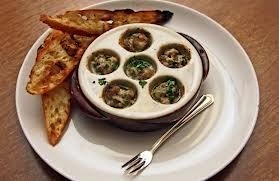
As you are now aware, writing this blog is hard work - drinking, writing, feasting and gecko wrangling all take their toll, so I decided to finish the weekend with a massage before driving home.

A good time was had by all and we can't wait to do it all again! Note from Victoria: It was wonderful, delicious and slosh-ful! And fruitful, believe it or not. The kind of break I could use every week!!!
Published on April 07, 2014 00:00
April 4, 2014
The Duke of Wellington Tour - Video Highlights - Part Four - St. James's Street

Kristine and Victoria have a very special day planned for Sunday, September 7th - a walking tour of the St. James's area of London. Below you'll find highlights of just a few of the places we'll be visiting as we take a meandering walk, during which you'll hear tales about gentlemen’s clubs and famed personalities who frequented the area. Hear tales of bawdy houses, royal chapels, and courtesans. Explore hidden alleys and tucked away streets. Discover their connections to duels, downfalls, and dandies before we quench our thirst at some of London’s most historic and atmospheric pubs. The day also includes time to stop for snacks, lunch, and a bit of shopping.
We'll leave our hotel, the Grosvenor, at Victoria Station and walk up to Buckingham Palace
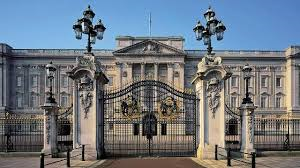
From there, we'll take a peek into St. James's and Green Park before turning down The Mall to pass Clarence House and take a short cut up to St. James's Palace and St. James's Street. Click here to watch a video of a stroll down the Street .
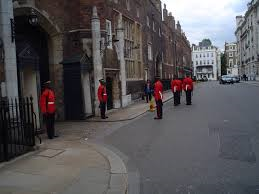
Arriving at St. James's Street, we'll steep ourselves in Georgian and Regency history as we stroll past the shopfronts of such venerable institutions as Lock's Hatters and Berry Brothers and Rudd. We'll pass the iconic and fabled gentlemen's clubs - Brooks's Club, Boodles and, of course, White's, where we'll stroll by the famous bow window, where Brummell held court.
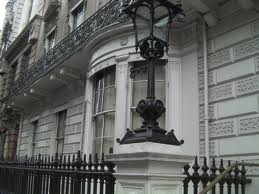
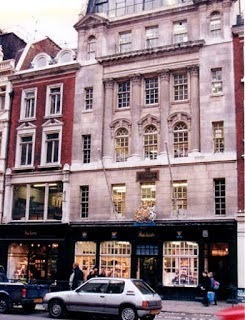
At the top of the Street, we'll arrive at Piccadilly, where we'll have plenty of time to see the Royal Academy (formerly Burlington House) and explore Hatchard's Bookstore (above) and Fortnum and Mason. We'll stop for tea at Richoux Tea Rooms, a favourite haunt of Victoria and Kristine's.
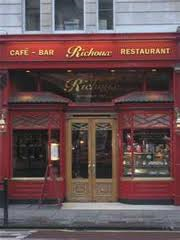
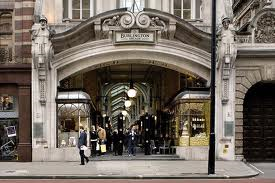
Afterwards, we'll cross the street in order to see the Burlington Arcade, the longest covered shopping street in the world. The Burlington Arcade (above) was built from designs by Ware for Lord George Cavendish in 1815, and is 'famous,' as Leigh Hunt tells us, 'for small shops and tall beadles.' What's a beadle, you ask? Click here to find out. For more on Piccadilly and it's environs, see my prior post here. More soon!
JOIN US IN SEPTEMBER!
For complete itinerary and details of The Duke of Wellington Tour, click here.
Published on April 04, 2014 00:00
April 2, 2014
Napoleon's First Abdication
In early April, 1814, Napoleon's career as l'Empereur, came to its first end. Spoiler Alert: it didn't last for long...
 Napoleon in His Study at the Tuileries 1812by Jacques-Louis David, (1748-1815), National Gallery of Art, Washington, D.C.
Napoleon in His Study at the Tuileries 1812by Jacques-Louis David, (1748-1815), National Gallery of Art, Washington, D.C.
Following the disaster of his failed invasion of Russia in 1812, Napoleon's brilliance as a general seemed to fail him. After losing thousands of troops in the battles and long trek back to France, his Grand Armée never regained its primacy. Napoleon lost the Battle of Leipzig against the Sixth Coalition (Great Britain, Austria, Russia, Prussia, Sweden, Spain, and Portugal) in October, 1813, the largest and bloodiest battle of the Napoleonic Wars, with over 90,000 casualties.
After this defeat, Napoleon's forces were doomed. Coalition forces pursued him into France from the east and the British-led armies of the Peninsular War had invaded France from the south. Paris fell to the Coalition in March 1814.
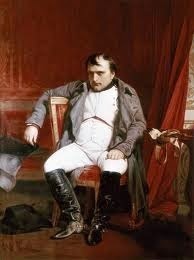 Napoleon at Fontainebleau, 31 March, 1814by Paul Delaroche (1797-1856) Paris, Musée de l'Armée
Napoleon at Fontainebleau, 31 March, 1814by Paul Delaroche (1797-1856) Paris, Musée de l'Armée
Napoleon had withdrawn to the palace at Fontainebleau where, learning of the French Senate's act deposing him, he abdicated in favor of his son on April 4, 1814. His second wife, Marie Louise, was to be regent. The Coalition Allies were not amused. They insisted on a complete abdication, with Marie Louise and her son to be sent out of France, as well as Napoleon himself.
On April 11, 1814, he signed the act of abdication declaring he "...renounces, for himself and his heirs, the thrones of France and Italy, and that there is no personal sacrifice, even that of his life, which he is not ready to do in the interests of France."
 Les Adieux to the Troops at Fontainebleau, April 20, 1814by Horace Vernet (1789-1863)
Les Adieux to the Troops at Fontainebleau, April 20, 1814by Horace Vernet (1789-1863)
After saying farewell to the last of his faithful troops, Napoleon was exiled to the island of Elba off the southern coast of France.
We all know the familiar story of his escape from Elba in February 1815 while the leaders of the Allies were conferring at the Congress of Vienna about how to undo his conquests, his return to France and his attempts to regain full power by retaking Belgium. Unfortunately for his ambitions, the Allies had other ideas. Led by the 1st Duke of Wellington, the Allied Armies defeated the French in the Battle of Waterloo, June 18, 1815. Within a few weeks, Napoleon surrendered to the British (July 15, 1815) and was sent to the remote south Atlantic island of St Helena, where he died six years later.
 Napoleon at Saint-Helene, by Francois-Joseph Sandmann
Napoleon at Saint-Helene, by Francois-Joseph Sandmann
Napoleon (1769-1821) is one of those historical characters who has become much larger than life since his death. In the nearly 200 years since he was decisively defeated at the Battle of Waterloo and subsequently exiled to St.Helena, his accomplishments have apparently outweighed his destruction of thousands of lives in popular thought. He had taken power in France in 1799, in the aftermath of the Revolution and Reign of Terror. His reign brought many needed reforms, such as ending feudal practices and enforcing religious toleration. He is particularly honored for his adoption of the new system of national law, the Code Napoleon.
 Tomb of Napoleon, Paris
Tomb of Napoleon, Paris
After his 1821 death in St Helena, he was buried on the island. In 1840, his remains were returned to France with great pomp, and his elaborate tomb was set in the Dôme des Invalides in Paris, completed in 1860.
However his accomplishments have been honored, Napoleon's ability to justify incredible national sacrifice in service to his ambition to rule all of Europe is not as admirable. His efforts took more than ten years, cost a countless thousands of lives, and destroyed great swatches of territory. You can have your Napoleon, if you want him -- we'll take the real hero, Arthur Wellesley, the 1st Duke of Wellington!
 1st Duke of Wellington, by Sir Thomas Lawrence
1st Duke of Wellington, by Sir Thomas Lawrence
Join Kristine and Victoria in England September 4-14, 2014 for ten days exploring English History and having a great time!! Details at
http://wellingtontour.blogspot.com
.
 Napoleon in His Study at the Tuileries 1812by Jacques-Louis David, (1748-1815), National Gallery of Art, Washington, D.C.
Napoleon in His Study at the Tuileries 1812by Jacques-Louis David, (1748-1815), National Gallery of Art, Washington, D.C.Following the disaster of his failed invasion of Russia in 1812, Napoleon's brilliance as a general seemed to fail him. After losing thousands of troops in the battles and long trek back to France, his Grand Armée never regained its primacy. Napoleon lost the Battle of Leipzig against the Sixth Coalition (Great Britain, Austria, Russia, Prussia, Sweden, Spain, and Portugal) in October, 1813, the largest and bloodiest battle of the Napoleonic Wars, with over 90,000 casualties.
After this defeat, Napoleon's forces were doomed. Coalition forces pursued him into France from the east and the British-led armies of the Peninsular War had invaded France from the south. Paris fell to the Coalition in March 1814.
 Napoleon at Fontainebleau, 31 March, 1814by Paul Delaroche (1797-1856) Paris, Musée de l'Armée
Napoleon at Fontainebleau, 31 March, 1814by Paul Delaroche (1797-1856) Paris, Musée de l'ArméeNapoleon had withdrawn to the palace at Fontainebleau where, learning of the French Senate's act deposing him, he abdicated in favor of his son on April 4, 1814. His second wife, Marie Louise, was to be regent. The Coalition Allies were not amused. They insisted on a complete abdication, with Marie Louise and her son to be sent out of France, as well as Napoleon himself.
On April 11, 1814, he signed the act of abdication declaring he "...renounces, for himself and his heirs, the thrones of France and Italy, and that there is no personal sacrifice, even that of his life, which he is not ready to do in the interests of France."
 Les Adieux to the Troops at Fontainebleau, April 20, 1814by Horace Vernet (1789-1863)
Les Adieux to the Troops at Fontainebleau, April 20, 1814by Horace Vernet (1789-1863)After saying farewell to the last of his faithful troops, Napoleon was exiled to the island of Elba off the southern coast of France.
We all know the familiar story of his escape from Elba in February 1815 while the leaders of the Allies were conferring at the Congress of Vienna about how to undo his conquests, his return to France and his attempts to regain full power by retaking Belgium. Unfortunately for his ambitions, the Allies had other ideas. Led by the 1st Duke of Wellington, the Allied Armies defeated the French in the Battle of Waterloo, June 18, 1815. Within a few weeks, Napoleon surrendered to the British (July 15, 1815) and was sent to the remote south Atlantic island of St Helena, where he died six years later.
 Napoleon at Saint-Helene, by Francois-Joseph Sandmann
Napoleon at Saint-Helene, by Francois-Joseph SandmannNapoleon (1769-1821) is one of those historical characters who has become much larger than life since his death. In the nearly 200 years since he was decisively defeated at the Battle of Waterloo and subsequently exiled to St.Helena, his accomplishments have apparently outweighed his destruction of thousands of lives in popular thought. He had taken power in France in 1799, in the aftermath of the Revolution and Reign of Terror. His reign brought many needed reforms, such as ending feudal practices and enforcing religious toleration. He is particularly honored for his adoption of the new system of national law, the Code Napoleon.
 Tomb of Napoleon, Paris
Tomb of Napoleon, ParisAfter his 1821 death in St Helena, he was buried on the island. In 1840, his remains were returned to France with great pomp, and his elaborate tomb was set in the Dôme des Invalides in Paris, completed in 1860.
However his accomplishments have been honored, Napoleon's ability to justify incredible national sacrifice in service to his ambition to rule all of Europe is not as admirable. His efforts took more than ten years, cost a countless thousands of lives, and destroyed great swatches of territory. You can have your Napoleon, if you want him -- we'll take the real hero, Arthur Wellesley, the 1st Duke of Wellington!
 1st Duke of Wellington, by Sir Thomas Lawrence
1st Duke of Wellington, by Sir Thomas LawrenceJoin Kristine and Victoria in England September 4-14, 2014 for ten days exploring English History and having a great time!! Details at
http://wellingtontour.blogspot.com
.
Published on April 02, 2014 00:30
March 31, 2014
London Mudlarking: The Essential Guide
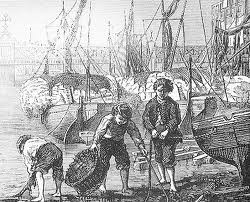
By Guest Blogger Alex Maccioni
On the face of it, mudlarking seems awful. Kristine has previously made it clear that its originswere brutal, dirty and desperate. Yet today you will often see people enjoying a spot of it after Sunday lunch with their children in tow. From my personal experiences I’d say that mudlarking has never been in better health, with more and more people becoming enthralled at the prospect of finding real treasure along the riverbank. The adrenaline rush from finding coins, broaches, bottles and bracelets on the grubby beaches is seriously addictive. There are not many hobbies where you can guarantee success of some sort, but this is one of them. Take anyone down to the banks in the right conditions and they will find clay pipes and china shards. If you stay long enough you will invariably find a piece with a pattern or a bit of text on it as well.
Part of the appeal for many is the fact that they feel reconnected with the Thames having been left feeling anaesthetised to its charms by fences, walls and steep drops. When they are actually splashing in puddles on the riverbank, seeing ducks and herons and witnessing the surprisingly large amount of boat traffic on the river, they are reminded about how impressive it really is. Mudlarking is about much more than filling your pockets with interesting bits and bobs.
The experience could be improved if there was less rubbish in the Thames, but when mudlarking you are always aware that one man’s rubbish is another man’s treasure, so I suppose that on one level it’s a necessary evil if future mudlarkers are to have anything to find! It probably also helps deter a great number of people, which means there will be more finds for those that are willing to put up with the odd can and bike dotted around the place.

Legal ConsiderationsIt’s worth being aware of the legal element of mudlarking before you get cracking. Perhaps the most important thing to bear in mind is obvious: never trespass. No matter how good a patch of shore looks, you cannot ignore clear signage that states that your movements are limited in that area. As far as I understand it, anyone can walk along the bank and pick up anything that catches their eye, but if you wish to start digging around or using a metal detector then the Port of London Authority needs to be contacted first of all.
The 1996 Treasure Act is just as applicable on the Thames as it is elsewhere, so finders may not necessarily mean keepers. Basically, this means groups of coins, gold and silver objects need to be reported straightaway. If you have found something that is legally defined as being treasure then you must allow a museum to purchase it from you for a price set by independent advisors. If they don’t have the necessary funds or they just don’t want it then it is yours to keep.
But not all finds are ‘real’ treasure. Some of the best are things like Victorian glass bottles with a local borough marked on the glass. Although not intrinsically valuable, they are of immense local interest and importance. If you find anything like this then you don’t have to report it but it’s best if you do get in touch with the local Finds Liason Officer at your council. They will record it in detail and this can help to build up a very particular image of an areas past history. The find will also remain yours.
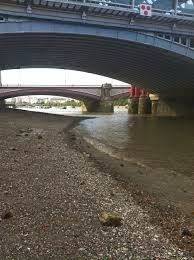
SafetySo that you are best prepared for mud and wind, it’s best to wear wellies and take a good waterproof. Preferably try to make sure that this is in a vivid or fluorescent colour so that if you do get into any difficulty that you will be easy to spot. Also, make sure you’re with someone else at all times. The tides can be vicious and rapid, so keep an eye on what the water around you is doing whilst also keeping your exit point in mind. Some plastic gloves may be worth wearing. We all know that there are some nasty items in the Thames and you don’t want to be getting this on your hands. In my experience I’d say the disposable surgical gloves are the best bet.
So this weekend, if the weather is good, go and give mudlarking a go – you’ll love it.
USEFUL ORGANISATIONSMuseum of London – They are fascinated by even the most mundane finds, so be sure to tell them all about your adventures. Thames and Field – A club dedicated to bringing new people into the practice. They arrange regular meet ups which are brilliant places to learn about new locations and the finds of others. London Mudlark – This is a fantastic Facebook page that is regularly updated with high quality images of historic finds from the Thames.Port of London Authority – Look at the tides before you venture out!
Published on March 31, 2014 00:00
March 28, 2014
The Duke of Wellington Tour - Video Highlights - Part Three

After our visit to Horse Guards, we'll be rounding out the day with a private dinner at The Grenadier Pub, one of London's historic pubs. This is another stop I try to make whenever I'm in London and I've been there with, among others, Victoria, my daughter, Brooke, with authors Diane Gaston, Sue Ellen Welfonder, and Carrie Bebris and even by myself.
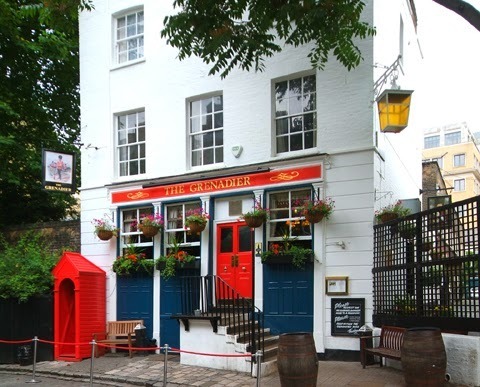
The Grenadier is a tad hard to find first time out, tucked away as it is behind Wilton Crescent on Wilton Row, or Wilton Mews, in Belgravia. You can see how it's situated on the street at right in the photo of the Row below.

Here's the Row on a map of London.
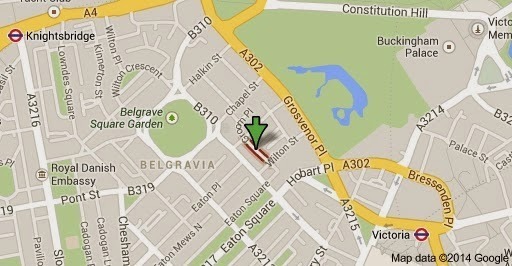
It's within walking distance of Apsley House and legend has it that the Pub was used as a mess by soldiers in the Duke of Wellington's regiment, although a pub in some form has stood on the spot since 1720.
Supposedly, there's a blocked up entrance to a tunnel in the basement of the Pub that connects it to Apsley House. Keeping in mind that Wellington rarely fraternized with his soldiers - apart from his ADC's and a very few fellow officers - and that Wellington regularly traveled round London on horseback, in full view of all and sundry and wasn't the least concerned about hiding his movements - I put the story of the tunnel on the side of legend, rather than fact.
The Grenadier's military connection is not in doubt. Until 1834, Old Barrack Yard, the remnants of which run along the side of the Grenadier Pub, once formed the access road to Knightsbridge Foot Barracks, located on the site now occupied by St. Paul's Church, Wilton Place. When the Guards moved to their current home at Wellington Barracks in Birdcage Walk, the land was donated by the owner, the Duke of Westminster, to the Diocese of London.

Today, the Grenadier is awash in historic military decor and Napoleonic atmosphere, with much of the memorabilia focused upon Guards history.

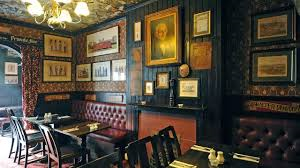
In addition, the Wellington connection is reinforced at the Grenadier through portraits of the Duke, like the one below over the fireplace, as well as the story that the mounting block outside the side entrance of the Pub (below, left) was placed there for Wellington's use. Which begs the question - did he use the block in order to mount his horse before riding it down the basement stairs and then home through the tunnel?


Bringing the history of the Grenadier closer to the present, legend also has it that The Grenadier was a regular haunt for Burt Bacharach in the 60's and that he wrote the score for What's New Pussycat when he stayed across the road in 10 Wilton Row. Madonna and Prince William are reputed to frequent the Pub, which is said to serve the best "secret recipe" Bloody Mary's in London.
You'll agree that The Grenadier was a "must do" for the Duke of Wellington Tour and Victoria and I look forward to the private dinner our tour group is slated to enjoy here. Not to mention the cocktails . . . . .
. . . . . . . And the ghost. The Grenadier is commonly known as one of the most haunted places in London, so I could hardly keep it a secret. The Pub is supposedly haunted by the ghost of a soldier who was beaten to death for cheating at cards in the Pub. If you're interested in learning more about the haunted history of the Pub, here's a video about it from the television series Great British Ghosts, which also happens to have some great footage of the interior of the Pub, its decor and atmosphere. Not mention the cellars.

Personally, I've never seen a ghost inside the Grenadier. Rather, I saw them (yes, plural) around the corner in Old Barrack Yard, above. You can read all about my ghostly encounter in a prior post here.
Oh, one more thing . . . . . . . I should mention that ghost sightings are most frequent in the month of September.
COMPLETE ITINERARY AND DETAILS FOR THE DUKE OF WELLINGTON TOUR IN SEPTEMBER 2014 CAN BE FOUND HERE. Why not join us??
Published on March 28, 2014 00:00
March 26, 2014
C. Aubrey Smith, a Most Familiar Face
One of the joys of watching (old) movies is the delight of recognizing familiar actors and actresses -- the ones who basically played the same character over and over in different films, in different costumes, in different historical settings, but essentially "That Guy."
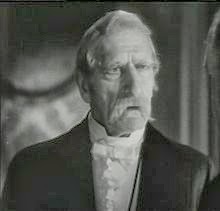 C. Aubrey Smith as the Earl of Dorincourt in Little Lord Fauntleroy, 1936 We've all seen Sir Charles Aubrey Smith (1863 - 1948) in many films over the years One of my favorites is the classic Prisoner of Zenda with Ronald Coleman in the double role of the King and the Englishman, Douglas Fairbanks, Jr. as the sword-wielding villain, making this a triple threat British historical epic. Ignore the silly plot and enjoy the faces! You'll also see Madeleine Carroll, Mary Astor, David Niven, and Raymond Massey in the cast. Here is a clip from Turner Classic Movies. (Sorry about the ad, but it can't be helped I guess.)
C. Aubrey Smith as the Earl of Dorincourt in Little Lord Fauntleroy, 1936 We've all seen Sir Charles Aubrey Smith (1863 - 1948) in many films over the years One of my favorites is the classic Prisoner of Zenda with Ronald Coleman in the double role of the King and the Englishman, Douglas Fairbanks, Jr. as the sword-wielding villain, making this a triple threat British historical epic. Ignore the silly plot and enjoy the faces! You'll also see Madeleine Carroll, Mary Astor, David Niven, and Raymond Massey in the cast. Here is a clip from Turner Classic Movies. (Sorry about the ad, but it can't be helped I guess.)
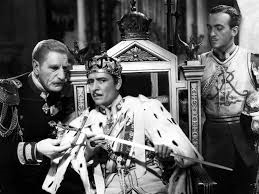 Smith, Coleman and Niven in The Prisoner of Zenda
Smith, Coleman and Niven in The Prisoner of Zenda
Smith, who held a degree from Cambridge, was a championship Cricket player in Britain and South Africa.
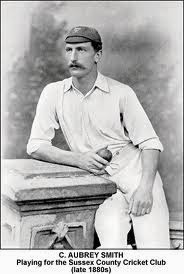
He appeared frequently on the London stage and when he turned to film, moved to Hollywood. He appeared in dozens of films, the perfect British officer, European aristocrat, grandfatherly gentleman, and sometimes even a villain.
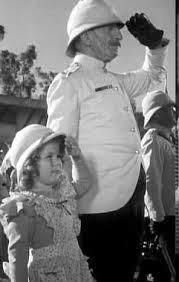 Shirley Temple and Smith in Wee Willie Winkie, 1937
Shirley Temple and Smith in Wee Willie Winkie, 1937
Rudyard Kipling's story was the basis for this 1937 vehicle for Shirley Temple and her dimples. Set in the 19th century British Raj in India, it co-starred Smith as the Colonel/grandfather.
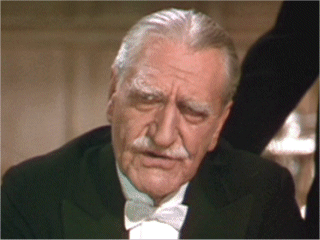 As General Burroughs in Four Feathers, 1939 Based on the novel by A. E. W. Mason, Four Feathers is a well-known story of 19th century cowardice and heroism. It is renowned for its desert scenes filmed in the Sudan, often compared to the brilliance of Lawrence of Arabia.
As General Burroughs in Four Feathers, 1939 Based on the novel by A. E. W. Mason, Four Feathers is a well-known story of 19th century cowardice and heroism. It is renowned for its desert scenes filmed in the Sudan, often compared to the brilliance of Lawrence of Arabia.
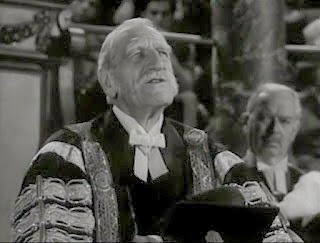 C. Aubrey Smith, C.B.E.
C. Aubrey Smith, C.B.E.
Smith played the role of the Chancellor of Oxford in The Adventures of Mark Twain, 1944, starring Frederic March in the title role.
Smith was named a commander of the Order of the British Empire in 1938; King George VI knighted Smith in 1944.
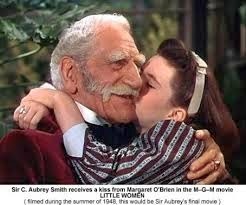
Smith and Margaret O'Brien in Little Women, 1949
Released after his death in 1948, Little Women was Smith's last film. It was the top grossing film of the year.
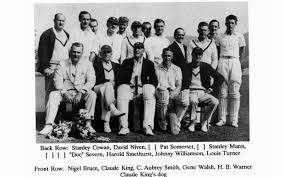 During his many years in Hollywood in the 1930's and later, Smith organized popular cricket matches with teams drawn from some of the industry's most famous British stars, such as Coleman, Fairbanks, Niven, Laurence Olivier, Errol Flynn, Leslie Howard, Cary Grant, Nigel Bruce, Basil Rathbone, and writer P.G. Wodehouse.
During his many years in Hollywood in the 1930's and later, Smith organized popular cricket matches with teams drawn from some of the industry's most famous British stars, such as Coleman, Fairbanks, Niven, Laurence Olivier, Errol Flynn, Leslie Howard, Cary Grant, Nigel Bruce, Basil Rathbone, and writer P.G. Wodehouse.
Oddly enough, while a young man, Smith had settled in South Africa to prospect for gold in 1888-89. While there he developed pneumonia and was wrongly pronounced dead by doctors. Fifty years on, in 1948, Smith did actually succumb pneumonia. He died in Beverly Hills at age 85.
 C. Aubrey Smith as the Earl of Dorincourt in Little Lord Fauntleroy, 1936 We've all seen Sir Charles Aubrey Smith (1863 - 1948) in many films over the years One of my favorites is the classic Prisoner of Zenda with Ronald Coleman in the double role of the King and the Englishman, Douglas Fairbanks, Jr. as the sword-wielding villain, making this a triple threat British historical epic. Ignore the silly plot and enjoy the faces! You'll also see Madeleine Carroll, Mary Astor, David Niven, and Raymond Massey in the cast. Here is a clip from Turner Classic Movies. (Sorry about the ad, but it can't be helped I guess.)
C. Aubrey Smith as the Earl of Dorincourt in Little Lord Fauntleroy, 1936 We've all seen Sir Charles Aubrey Smith (1863 - 1948) in many films over the years One of my favorites is the classic Prisoner of Zenda with Ronald Coleman in the double role of the King and the Englishman, Douglas Fairbanks, Jr. as the sword-wielding villain, making this a triple threat British historical epic. Ignore the silly plot and enjoy the faces! You'll also see Madeleine Carroll, Mary Astor, David Niven, and Raymond Massey in the cast. Here is a clip from Turner Classic Movies. (Sorry about the ad, but it can't be helped I guess.)
 Smith, Coleman and Niven in The Prisoner of Zenda
Smith, Coleman and Niven in The Prisoner of Zenda Smith, who held a degree from Cambridge, was a championship Cricket player in Britain and South Africa.

He appeared frequently on the London stage and when he turned to film, moved to Hollywood. He appeared in dozens of films, the perfect British officer, European aristocrat, grandfatherly gentleman, and sometimes even a villain.
 Shirley Temple and Smith in Wee Willie Winkie, 1937
Shirley Temple and Smith in Wee Willie Winkie, 1937Rudyard Kipling's story was the basis for this 1937 vehicle for Shirley Temple and her dimples. Set in the 19th century British Raj in India, it co-starred Smith as the Colonel/grandfather.
 As General Burroughs in Four Feathers, 1939 Based on the novel by A. E. W. Mason, Four Feathers is a well-known story of 19th century cowardice and heroism. It is renowned for its desert scenes filmed in the Sudan, often compared to the brilliance of Lawrence of Arabia.
As General Burroughs in Four Feathers, 1939 Based on the novel by A. E. W. Mason, Four Feathers is a well-known story of 19th century cowardice and heroism. It is renowned for its desert scenes filmed in the Sudan, often compared to the brilliance of Lawrence of Arabia.  C. Aubrey Smith, C.B.E.
C. Aubrey Smith, C.B.E.Smith played the role of the Chancellor of Oxford in The Adventures of Mark Twain, 1944, starring Frederic March in the title role.
Smith was named a commander of the Order of the British Empire in 1938; King George VI knighted Smith in 1944.

Smith and Margaret O'Brien in Little Women, 1949
Released after his death in 1948, Little Women was Smith's last film. It was the top grossing film of the year.
 During his many years in Hollywood in the 1930's and later, Smith organized popular cricket matches with teams drawn from some of the industry's most famous British stars, such as Coleman, Fairbanks, Niven, Laurence Olivier, Errol Flynn, Leslie Howard, Cary Grant, Nigel Bruce, Basil Rathbone, and writer P.G. Wodehouse.
During his many years in Hollywood in the 1930's and later, Smith organized popular cricket matches with teams drawn from some of the industry's most famous British stars, such as Coleman, Fairbanks, Niven, Laurence Olivier, Errol Flynn, Leslie Howard, Cary Grant, Nigel Bruce, Basil Rathbone, and writer P.G. Wodehouse. Oddly enough, while a young man, Smith had settled in South Africa to prospect for gold in 1888-89. While there he developed pneumonia and was wrongly pronounced dead by doctors. Fifty years on, in 1948, Smith did actually succumb pneumonia. He died in Beverly Hills at age 85.
Published on March 26, 2014 00:00
March 24, 2014
A Taste of London in Florida
If Kristine and Victoria could not spend an afternoon with Arthur Wellesley, 1st Duke of Wellington, with whom would they choose to meet up???
How about Sherlock Holmes??? Well, almost. Recently we attended a performance of The Game's Afoot at the Gulf Shore Playhouse in Naples, FL. We laughed ourselves silly. It's about an actor who is known for playing the character of Sherlock Holmes on the stage.
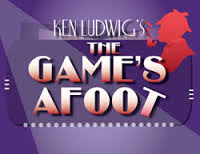
Jeffrey Binder played the leading role, supported by an excellent cast well suited to the perfectly farcical nature of the play written by Ken Ludwig, winner of the Mystery Writers of America Edgar Allen Poe Award for Best Play of 2012.
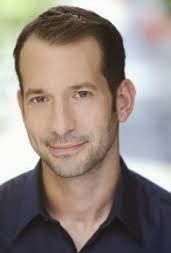 Jeffrey Binder
Jeffrey Binder
Set in 1936, action takes place in the opulent Connecticut castle of actor William Gillette (portrayed by Binder), who is renowned for his Broadway success as Sherlock Holmes. On Christmas Eve, Gillette has invited the cast members of his recently concluded run to his lavish castle. Hostess for the event is Binder's scatter-brained mother, played endearingly by Barbara Kinglsey.
 Barbara Kingsley
Barbara Kingsley
The house party of two couples, all of whom were in the Holmes play on Broadway, is joined by spiteful theatre critic Daria Chase (Claire Brownell).
Quoting the play's synopsis "... when one of the guests is stabbed to death, the festivities in this isolated house of tricks and mirrors quickly turn dangerous. Then it’s up to Gillette himself, as he assumes the persona of his beloved Holmes, to track down the killer before the next victim appears."
Ken Ludwig, the playwright, has many awards for his many plays, including Lend Me a Tenor, Moon Over Buffalo, and Crazy for You. His book, How to Teach Your Children Shakespeare, came out in 2013 from Random House. A full Bio is here.
Before the show, we had a lovely time at L'Angolo, complete with our favorite Italian bubbly. Though one hubby had to work (sigh!), the other came along and loved the show!
 Fifth Avenue S. is THE place to eat in Naples
Fifth Avenue S. is THE place to eat in Naples
 PROSECCO!!!!
PROSECCO!!!!
 Kristine, Victoria, and Ed pre-theatre
Kristine, Victoria, and Ed pre-theatre
How about Sherlock Holmes??? Well, almost. Recently we attended a performance of The Game's Afoot at the Gulf Shore Playhouse in Naples, FL. We laughed ourselves silly. It's about an actor who is known for playing the character of Sherlock Holmes on the stage.

Jeffrey Binder played the leading role, supported by an excellent cast well suited to the perfectly farcical nature of the play written by Ken Ludwig, winner of the Mystery Writers of America Edgar Allen Poe Award for Best Play of 2012.
 Jeffrey Binder
Jeffrey BinderSet in 1936, action takes place in the opulent Connecticut castle of actor William Gillette (portrayed by Binder), who is renowned for his Broadway success as Sherlock Holmes. On Christmas Eve, Gillette has invited the cast members of his recently concluded run to his lavish castle. Hostess for the event is Binder's scatter-brained mother, played endearingly by Barbara Kinglsey.
 Barbara Kingsley
Barbara KingsleyThe house party of two couples, all of whom were in the Holmes play on Broadway, is joined by spiteful theatre critic Daria Chase (Claire Brownell).
Quoting the play's synopsis "... when one of the guests is stabbed to death, the festivities in this isolated house of tricks and mirrors quickly turn dangerous. Then it’s up to Gillette himself, as he assumes the persona of his beloved Holmes, to track down the killer before the next victim appears."
Ken Ludwig, the playwright, has many awards for his many plays, including Lend Me a Tenor, Moon Over Buffalo, and Crazy for You. His book, How to Teach Your Children Shakespeare, came out in 2013 from Random House. A full Bio is here.
Before the show, we had a lovely time at L'Angolo, complete with our favorite Italian bubbly. Though one hubby had to work (sigh!), the other came along and loved the show!
 Fifth Avenue S. is THE place to eat in Naples
Fifth Avenue S. is THE place to eat in Naples  PROSECCO!!!!
PROSECCO!!!! Kristine, Victoria, and Ed pre-theatre
Kristine, Victoria, and Ed pre-theatre
Published on March 24, 2014 00:00
Kristine Hughes's Blog
- Kristine Hughes's profile
- 6 followers
Kristine Hughes isn't a Goodreads Author
(yet),
but they
do have a blog,
so here are some recent posts imported from
their feed.



